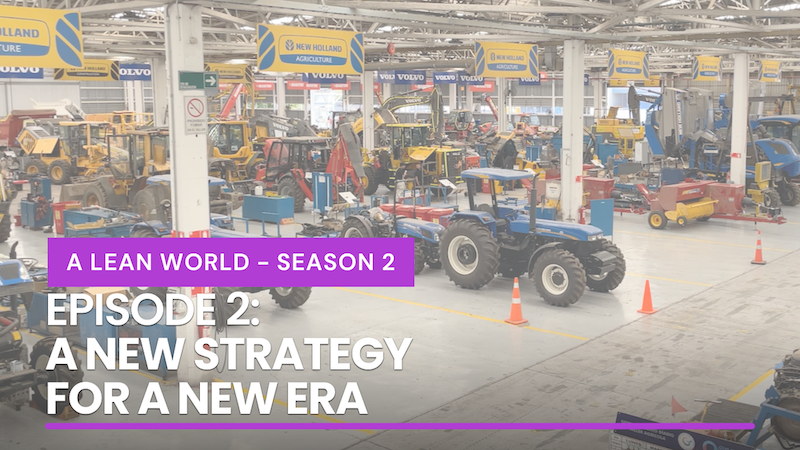
Before developing a new product, assess your idea
OPINION – Working on new product development without first assessing potential risks will almost certainly lead you to failure. Can you imagine the Wright brothers flying without having done preliminary studies on the feasibility of their idea?
Words: Boaz Tamir, President, Israel Lean Enterprise
Anyone who has ever been an entrepreneur or worked in new product development has felt the almost addictive sense of euphoria and power that comes from believing they have come up with a disruptive idea. Indeed, "We are going to conquer the market!" is an often-heard mantra in the world of innovation.
Unfortunately, as they enthusiastically build their case, many of our development professionals and entrepreneurs seem to lose touch with reality: they know there can be no innovation without risk, but their actions rarely reflect this awareness. As a result, all their energy seems to focus on reaching the breakthrough without considering the potential obstacles and risks they will encounter.
I have been fortunate enough to witness several startup successes, as well as many failures, and I have learned that the euphoria that comes from developing what we perceive as a groundbreaking product or service can often lead to disappointment, if not disaster. Even brilliant ideas must pass the test of feasibility – a necessary gateway that we must cross on our way to innovation.
We should always aim to develop a real understanding of the difference that lean can make for our target customers and the contribution it can give to developing new business. An important test for an entrepreneur is in his or her ability to examine a new idea soberly and define and understand the gap between what can be empirically proven to work and the goals of the development project (even when they appear to be based on sound theories).
A good development professional must deal with the tension between the vision of the innovation and the ability to create processes that can fulfill that vision, while moving through the fog of uncertainty. To someone driven by a desire to change and unleash creativity, these words might sound far-fetched (and, believe me, I've heard the saying "If you can't stand the heat get out of the kitchen") but my experience has taught me that engaging in new product development without the necessary preparation normally doesn't end well.
But how can we achieve this balance?
First, by examining the development idea at different stages – rather than doing all the trials at the end.
At the beginning of the 20th century, the Wright brothers developed a vision to overcome the laws of gravity, one that could not have come to fruition had they not focused first on tackling the risks inherent to taking flight, piloting the airplane, and landing it in one piece. The development process began with the identification of the technological gaps that, if addressed, would enable the plane to fly: its aerodynamic structure (body and wings), its motion system (propulsion), its steering mechanism, and the interaction between all these elements.
The process focused on scientific examination, which began with the systematic documentation of thousands of attempts and continued by combining it with the study of behavioral patterns and finally turning the findings into a comprehensive theory – which was eventually able to turn the vision into a reality.
Unlike the widely accepted waterfall model for the development of new products, which rests on an idea that empirical testing can take place only after the entire system has been constructed, the approach adopted by the Wright brothers initially focused on identifying the gaps in knowledge (the risk), through experimentation designed to answer research questions and articulate a theory.
Looking back, the Wright Brothers' idea of development has saved me from failure more than once. Their way of developing innovation greatly resembles what we today call set-based concurrent engineering in LPPD (Lean Product and Process Development).
Identifying risks early on can help us to articulate and define the boundaries of the development work. Sometimes, it is only in the final stages of development that we find out that some of the previously unforeseen risks are leading to design changes, severe delays or even the total collapse of the initiative (while other times this enquiry phase is when the biggest breakthroughs occur). Starting out slowly and with caution at the beginning of the development process – preliminarily mapping risks – guarantees accelerated progress closer to its completion.
Even a newbie firefighter knows that the most effective way to put out a fire is to prevent it. A structured process to assess potential problems, identify signs of danger, and deal with them as early as possible will limit risk when the development project is still in its infancy. Conversely, a development process that is not accompanied by an understanding of and preliminary attention to the sources of the threat can be compared to a human body that doesn't boost its immune system with a vaccine.
THE AUTHOR

Read more


INTERVIEW – Overburdened and worn out? Visualizing your tasks using Personal Kanban can help you make sense of a busy schedule and reduce your stress, says Jim Benson.


FEATURE – Upon realizing they were struggling to engage people in continuous improvement, Fuji Xerox Australia’s IT team found a unique way to breathe new life into its lean efforts… a book club.


FEATURE – Most organizations rely on the support of lean consultants to bring their transformations forward, but how can they make the most of their expertise and knowledge?


WEB SERIES – In the second episode of our docuseries on lean in Chile, we learn how, with a clear purpose and strong commitment from leadership, SKC is transforming its processes and mindset and building a competitive advantage.

